Carsten Krieglstein, head of liability at Allianz Global Corporate & Specialty Central & Eastern Europe, explains that automated cars give rise to a host of legal questions which insurers have no option but to deal with

Reading a newspaper on the way to work, watching a film while driving from Munich to Frankfurt or playing Monopoly with the kids after setting off on drive holiday. For a long time now, motorists and engineers have been dreaming of the driver handing over the control of the vehicle and said vehicle arriving at its destination independently and accident-free.
By 2020, highly automated cars navigating German highways should be a reality, at least technologically speaking, which should open up a lot of doors in terms of creating output and employment. This, at least, is the conclusion of the recently published study of the Fraunhofer Institut*. The underlying concept, however, is hardly revolutionary.
“The Safest Place” (1935), a film commissioned by General Motors, shows a car cruising without a driver, observing all rules of traffic in an exemplary fashion. In 1945, American Ralph Teetor invented cruise control, which Chrysler used in their cars for the first time at the end of the 50s. In the early 80s, robot cars were built as part of a cooperation initiative between Munich’s Bundeswehr University and Ernst Dickmann. Back then, those cars were already capable of developing a speed of up to 96 km/h on empty roads.
Subsequently, EUREKA*, a pan-European project, built robot-controlled cars that navigated distances of around 1,000 km on multilane highways as part of ordinary traffic en route to Paris or Copenhagen, reaching a speed of up to 130 km/h. Autonomous functions like tracking, driving in convoy or automatically switching lanes or overtaking were already integrated.
The DARPA Urban Challenge1 introduced developments in autonomous robot cars to a wider audience for the first time in 2007. Since then, driverless research vehicles manufactured by Google or the successful test run for a research vehicle developed on the basis of a Mercedes-Benz C-Class, which took place on the historical Beta Benz route stretching for around 100 kilometers, have also made the headlines.
These days, all major automotive groups and their suppliers are working on technology designed to register the entirety of the vehicle’s surroundings in a swift and reliable manner, in order to then evaluate the data in relation to the vehicle’s speed and direction of travel.
Fully automated cars - a peek into the future
The idea of fully automated driving is based on three fundamental premises, which should bring about the transition to autonomous mobility:
1. Improving traffic efficiency :The traffic forecast for 2030 predicts that passenger transport will increase by 13 percent and goods transport by 38 percent. Automated cars can play a key role in improving traffic coordination as a result of adapting the driving style and the choice of route to real-time traffic conditions, which should optimize the flow of traffic. Automated driving can help significantly reduce the accordion effect arising in times of heavy traffic, in particular, and the concomitant traffic jams, and that in traffic made up of both automated and non-automated cars.
2. Making traffic safer : The main cause of traffic accidents is human error. In 2014, for example, around 90 percent of all accidents were attributable to personal factors, with less than 1 percent related to technical faults. Enhancing and merging tried and tested assistance systems facilitating automated driving makes the Vision Zero, or zero fatalities in traffic accidents caused by human error, seem within our reach.
3. Lowering mobility-induced emissions : Slow-moving traffic and traffic jams increase the consumption of fuel, producing more emissions in comparison to traffic moving at normal speed. By gradually optimizing the flow of traffic, automated driving is intended to reduce the number of instances requiring braking or accelerating, resulting in lower consumption of fuel and reduced emission values. Moreover, automated driving can also increase the scope of electrical engines.
Automated vehicles
As a general rule, a distinction is made between six automation grades. Grades 0 and 1 are used for vehicles which require humans to perform the main driving tasks. A level 2 vehicle can, under certain circumstances, assume complete responsibility for steering. We are already familiar with the assistance function in combination with active cruise control that includes the stop & go function and assisted parking. Within all of these, however, humans have to continuously supervise the system, ready to intervene and grab the steering wheel at any point.
Level 3 automation means, first and foremost, highly automated driving, allowing the driver to, say, watch a film behind the wheel. However, when push comes to shove, drivers must be in a position to take over in keeping with the relevant warning times. Levels 4 and up are the quintessence of fully automated driving. Within these levels, drivers can leave steering the car to the computer on certain routes or let the vehicle take control in any traffic situation, even without them there (level 5 or autonomous driving).
We’ve already achieved level 2, or partly automated driving. It’s expected that highly automated driving will be technically feasible by 2020, and for fully automated driving to be a reality as of 2025 - 2030.
One thing is clear: when we talk about partly and fully automated vehicles, we are, by definition, taking into account a significant period of time during which we’ll have “mixed traffic”, since we have to assume there will be a mix of newer and older vehicle models. In fact, this may even be the case for good.
Legal basis for automated vehicles
At the moment, the question of whether highly and fully automated vehicles are compatible with traffic rules stipulated under the German Road Traffic Regulations (Straßenverkehrsordnung, StVO), or whether fully automated vehicles are subject to the StVO regulations at all, is still clouded debate. However, legislature is not an autonomous phenomenon and in a position to make arbitrary changes to national legal norms. The laws currently in place comply with the Vienna Convention on Road Traffic (Wiener Übereinkommen über den Straßenverkehr) dated 1968, which saw us wave goodbye to standardizing the fundamental rules of traffic across the globe. In particular, the treaty stipulates that the driver “has to be in control of the vehicle at all times”. An amendment was adopted in the autumn of 2014, according to which assistance systems are only deemed reliable provided the driver can take over or switch them off at all times.
In April 2016, the German government implemented this amendment to the Vienna Convention into the German legislation. This draft bill clears the way for automated driving systems to perform a growing number of driving tasks independently.
The liability law currently in place already applies to automated vehicles. According to said law, the holder of the vehicle is responsible for all damage caused while operating the vehicle (holder liability). For the purposes of protection, the accident victim is able assert a direct claim against the perpetrator’s auto liability insurance. However, as a general rule, legal disputes within this framework do not tend to be based exclusively on the driver’s fault (absolute liability). In the future, however, it is conceivable for the manufacturer and, subsequently, the parts supplier to be held liable for certain driving errors. This would shift the vehicle holder liability currently in place, transforming it into a product error and, by implication, product liability on the part of the car manufacturer (OEM) or automotive supplier.
In order to identify whether the accident was the result of an error in the automated steering system or a conventional mistake on the part of the driver, we would have to use the so-called black box, as we do with plane accidents. Regulations concerning possibilities for data access and data security are still in the early stages. As a general rule, however, the following holds true: the car data is the property of the car holder. The car holder decides which data to make available.
The industry has already set the next milestone: upon Google’s request, US National Highway Traffic Safety Administration (NHTSA) confirmed that it is generally possible for computers to be recognized as drivers. By way of restriction, however, it also stipulates that the regulations in place assume there is a real person behind the wheel of a car and that said car is equipped with pedals.
Data security
A more digitalized mobility and the associated increase in the amount of data create new challenges for vehicle security, infrastructure and protecting the rights to privacy. As a result, automated and interconnected driving systems require precise IT security standards and data protection regulations.
Experts involved in the aforementioned Fraunhofer study also identify the following “critical issues”: IT security (key word: cyber attacks), functional security and test processes for highly and fully automated vehicles. All companies involved in developing automated driving technology have to find a solution to these problems by 2020.
Whatever the case may be, cyber attacks also pose a challenge to the insurance industry, especially when it comes to establishing the extent to which insurance cover should be provided after the vehicles are delivered in the event they are manipulated by third parties.
Challenges for the insurance sector
At the moment, a sharp distinction is drawn between insurance concepts for the driver and the automotive manufacturer or supplier. However, according to a study carried out by management consultancy firm McKinsey, major changes are just around the corner for the auto insurance business model. Up until now, the spotlight has been on individual insurance solutions offering cover to protect all traffic participants against human errors. In the future, however, it will shift to insuring the few car manufacturers, manufacturers of assistance systems and fleet organizations in the event of technical failure in the vehicles.
Another exciting question is what sort of a lifecycle these vehicles would have, since it is necessary to guarantee system security across the entire lifecycle of highly automated vehicles. Nevertheless, protecting accident victims will continue to play the most important role when it comes to determining liability, regardless of whether there was someone behind the wheel or whether the vehicle was driving autonomously.
Up until now, the main parties involved in a traffic accident were auto insurers. As a general rule, in the event of third-party damage arising as a result of errors in the assistance system, the injured party is in a position to choose whether to assert the claim against the vehicle holder responsible or against the manufacturer. Within this framework, the internal settlement or recourse is the responsibility of the auto insurer. This is a long-established approach, since it results in a direct claim of the injured party against the auto insurer. In the event of damage to own vehicle as a result of system errors, the auto hull insurer is equally liable, even if the damage can be attributed to an error in the assistance system. The insurer is subrogated to all claims asserted by the policyholder against the assistance system manufacturer.
Subsequently, greater emphasis will be placed on recourses of auto insurers vis-à-vis assistance system manufacturers, which will have a bearing on product liability insurance. This means we have to develop a course of action to process recourses under product liability insurance.
By implication, this will lead to changes in the way insurers assess their risks. If, in ten to fifteen years’ time, cars will cover most of the distance autonomously and driver-related factors will have less bearing on the insurance model. However, the risk for the insurer won’t disappear completely, instead shifting from the “human error” to the “product error” category. 5
With the exception of hacker attacks, there are no uncertainties within the product liability and vehicle recall insurance concepts when it comes to cover for damage or product defects caused by assistance systems. In any case, the changes in the risk landscape and the increasing potential for vehicle recalls will influence how product and recall insurers calculate their premiums.
A while ago, Allianz set up various working groups on both a national and international level to examine the changes in the risk landscape. With the Allianz Center for Technology and the Allianz Global Automotive division, Allianz has established two more competence centers within the Group. These centers are in a close strategic dialogue with auto manufacturers and work together with national associations to improve insurance solutions and services currently offered.
By expanding the technical competencies of Allianz and making them more international, including in respect of driver assistance systems, vehicle classification, drive technology and autonomous driving, as well as forging new cooperation initiatives with automotive industry partners, such as manufacturers, suppliers or research institutions, Allianz intends to continue strengthening its position and develop new business models and mobility concepts together with its collaborators.
Conclusion
It will take some time for cars to be in a position to cruise German roads with full autonomy, and for the dream of fully automated driving to become reality. However, it is imperative the relevant legal framework be revised at this stage in order to create the necessary legal certainty, paving the way for highly and fully automated driving. Technological progress within the automotive industry has the potential to cause disruption within the insurance sector, which is why the latter is forced to keep a close eye on its developments and forge the right strategic course for the challenges of tomorrow.





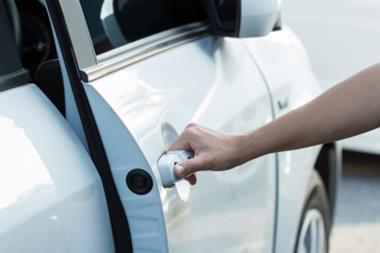
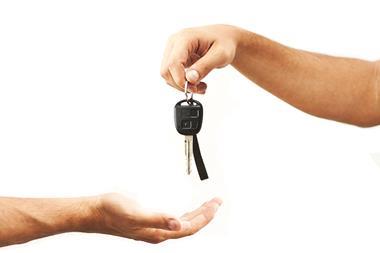





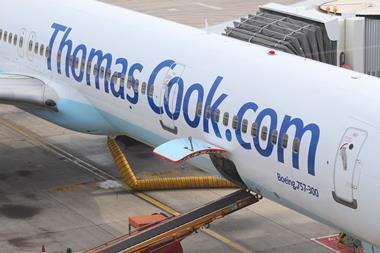

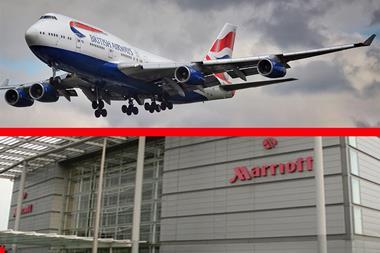

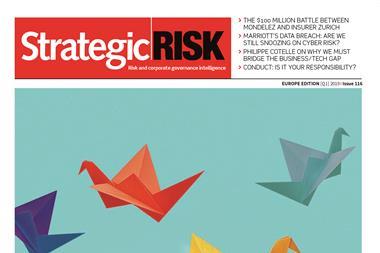



No comments yet